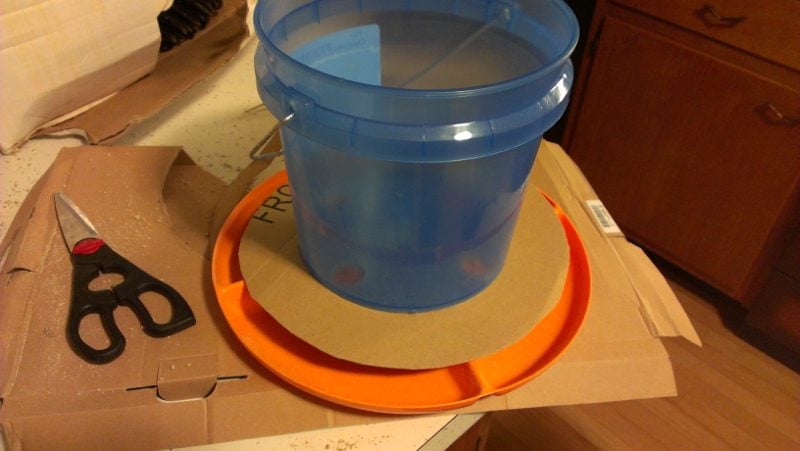I've been wanting to have chickens for some time now, I've been giving it a lot of thought and the more I thought about it, the more resolute I became towards raising chickens. I wanted to get them mostly for having fresh eggs and also to teach my daughters how to raise and care for animals that is not a dog or a cat.
Last weekend, I stopped in at a local feed store and they had a bunch of Rhode Island Red chicks, at $3 each, they were easier for me to get then ordering some off the Internet and having to meet minimum orders and pay for shipping. I didn't think to ask how old they were or if they knew when they hatched, but I'm assuming they were only a few days old, couldn't have been more than a week at most. I brought 5 chicks home with me, along with a brooder lamp, a bale of wood shavings and a bag of starter feed. In the last week, I swear the chicks have more than doubled in size.
I've been reading through posts on here, but I've not yet found my answers, it doesn't help that I've been distracted by all the interesting topics..
I guess this is where I whip out my wallet and start showing off pics of my new family members.

The ride home.. It seemed to have scared the crap out of some of them.

Their first night home.

Hungry! There is one chick that insists on jumping into the food and scratching around. It emptied nearly an entire bucket of feed in the first week. All the rest seem happy to scratch and eat the food off the floor.

Here's my attempt to keep the chicks from scratching in the food..

They can still jump up on it, but it should be harder to scratch. If they stand on the floor they can easily feed.
Also, being the geek that I am, I figured friends and family may want to see the chicks as they grow. I set up a streaming webcam which is visible at http://cluckercam.com. Who doesn't like to watch chicks on a webcam?



Last weekend, I stopped in at a local feed store and they had a bunch of Rhode Island Red chicks, at $3 each, they were easier for me to get then ordering some off the Internet and having to meet minimum orders and pay for shipping. I didn't think to ask how old they were or if they knew when they hatched, but I'm assuming they were only a few days old, couldn't have been more than a week at most. I brought 5 chicks home with me, along with a brooder lamp, a bale of wood shavings and a bag of starter feed. In the last week, I swear the chicks have more than doubled in size.
I've been reading through posts on here, but I've not yet found my answers, it doesn't help that I've been distracted by all the interesting topics..
- How long do I need to keep the brooder lamp for them? Last night, the chicks slept in the opposite side of the cage from where the lamp was. They were all in one great pile that looked warm and comfy. I'm wondering if that elect to not sleep under the lamp, they don't need it or it is putting enough heat out that they don't have to sleep directly under it anymore.
- How old do the chicks need to be before they are moved outside? Currently I have them in a dog cage, where they fit nicely, however they are growing fast and at their rate of growth, they may get too big for the dog cage I have them in.
- At this age, is it OK to feed them other things than the starter feed? My 4 year old decided to share her cake with them the other day and I've also read that chickens like all sorts of food from leafy greens to of course insects. This brings up my next question..
- If they eat anything other than the starter feed, which I understand dissolves without the chicks needing any grit in their diets, what do I need to give them for grit? Would some clean sandbox sand be good? Do they need small pebbles, is there a preferred grit source I should give them?
- Do I need to let them outside, even if it's just for a short period at a time?
I guess this is where I whip out my wallet and start showing off pics of my new family members.

The ride home.. It seemed to have scared the crap out of some of them.
Their first night home.
Hungry! There is one chick that insists on jumping into the food and scratching around. It emptied nearly an entire bucket of feed in the first week. All the rest seem happy to scratch and eat the food off the floor.
Here's my attempt to keep the chicks from scratching in the food..
They can still jump up on it, but it should be harder to scratch. If they stand on the floor they can easily feed.
Also, being the geek that I am, I figured friends and family may want to see the chicks as they grow. I set up a streaming webcam which is visible at http://cluckercam.com. Who doesn't like to watch chicks on a webcam?
Last edited:


